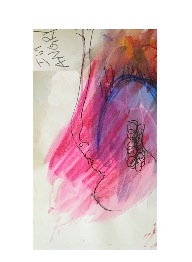Art therapy is a
method that uses art to treat mental disorders and promote mental health. The
history of painting and other arts related to it is about 40,000 years old. Painting
is a medium of expressing feelings rather than just a picture. However,
currently, painting is
becoming famous as one of the best mental therapy methods in the world.
Many therapists
claim that a painting expresses people's subconscious feelings. Any patient
suffering from mental illness acts in such a way as to bring out their true
feelings through a painting. Therefore, this method is very famous among many
therapists today and art therapists who specialize in it have joined the
service all over the world.
The goal of this
art therapy is self-discovery and through these explorations gaining personal
understanding and thereby developing new skills within oneself.
There are several
ways in which art therapy is used.
· Collage
·
Colouring
·
Doodling and
scribbling
·
Drawing
·
Finger painting
·
painting
·
Photography
·
Embodying
·
Working with clay
There are several ways that art therapy can be used. It is currently used to treat a wide range of mental disorders and mental disorders. Ageing-related problems, anxiety, cancer, depression, eating disorders, emotional difficulties, family or relationship problems, medical conditions, psychological symptoms associated with other medical problems, post-traumatic stress disorder (PTSD), psychosocial problems, stress, drug use disorders, etc. are here.
Art therapy means
Painting therapy has many benefits.
According to the 2016 Journal of the
American Art Therapy Association, anyone with or without an artistic talent who
engages in an artistic activity for an hour or so a day can greatly reduce
stress and create a sense of well-being.
Clients who have
experienced emotional trauma, physical abuse, domestic violence, anxiety,
depression, and other psychological issues can benefit from creative
expression. Here, elements such as painting, sculpture, and collage are used for young children and adults.
Adults under severe stress, children experiencing behavioural or social problems at school or home, children or adults who have experienced a traumatic event, children with learning disabilities, people living with brain injuries, and people with mental health problems can benefit from art therapy.

Further studies on art therapy revealed that it affects young children more than adults. Here, patients with traumatic mental disorders were cured through this art therapy, which helped to raise their mental level.
And it was proved
in certain research that this provides a great service to cancer patients, and
it helped to raise their standard of living.
And this art
therapy helped to uplift the mental state of the elderly in nursing homes.
A 2017 study found that
displaying art in hospital settings contributed to an environment where
patients felt safer. It also played a role in socialization and maintaining an
identity outside the hospital.
You don't have to
be artistic to attend art therapy. It is not like an art class at all. Art
therapy allows clients to focus on their inner experiences.
When creating art, people can focus on their perception, imagination, and emotions. Clients are encouraged to create art
that expresses their inner world rather than making something that is an
expression of the outer world.
Art therapy is done according to a certain
arrangement. The art therapy place is specially designed for that. This allows
the therapist to tailor it to the patient's state of mind.
Additionally, art
therapy is effective for all types of mental health conditions. For example,
one meta-analysis found that art therapy was not effective in reducing positive
or negative symptoms of schizophrenia.
Therefore, before
resorting to art therapy, it is essential to consider whether it will help the
patient's actual mental disorder.